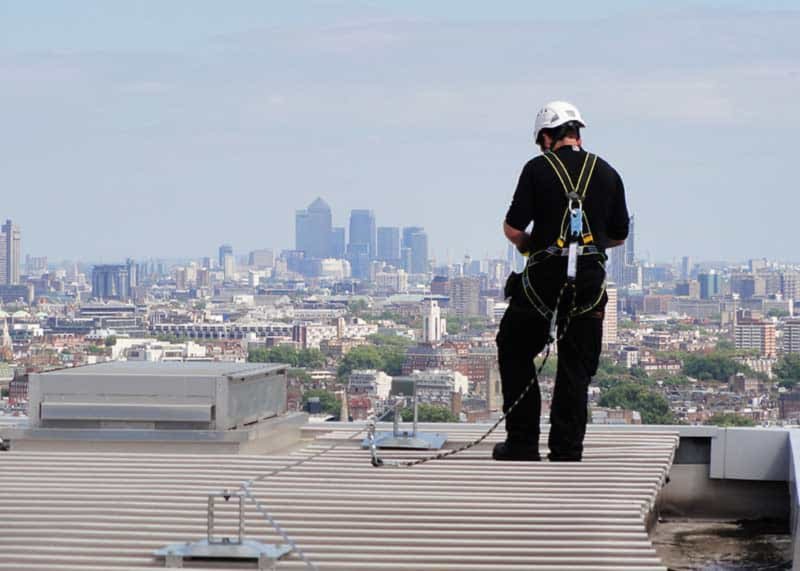

Lifeline systems are a critical form of fall protection. Fall protection systems can be used to arrest or stop workers in the event of a fall occurring or prevent workers from reaching a fall hazard altogether. In circumstances where a fall cannot be prevented using passive protection, such as railing, safety lifelines are your next line of fall protection.
We provide lifelines, anchors, harnesses, and other lifeline safety equipment to help workers safely perform work at height. Our team of safety experts can help you design and install your lifeline system to ensure the safety of your team and the compliance of your business.
Request Assistance phone -->
Our Kee Line Horizontal lifeline system is built to provide continuous protection for multiple users working at height.
Overhead rigid rail fall arrest system, paired with self-retracting lifelines, is a reliable, cost-effective way to reduce the risk of injury in elevated work environments where stable anchor points are challenging.
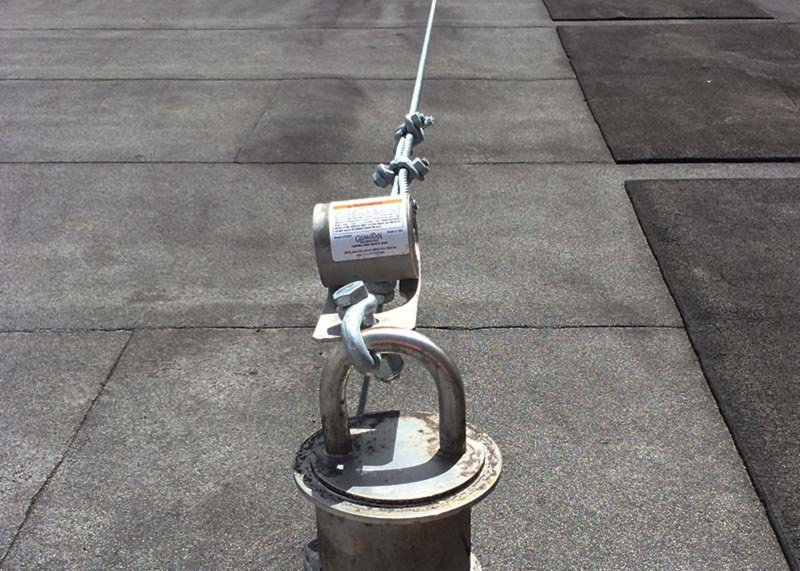
Pre-engineered horizontal lifeline system uses the Guardian Absorbinator. This lifeline system can be installed by a trained Competent Person.
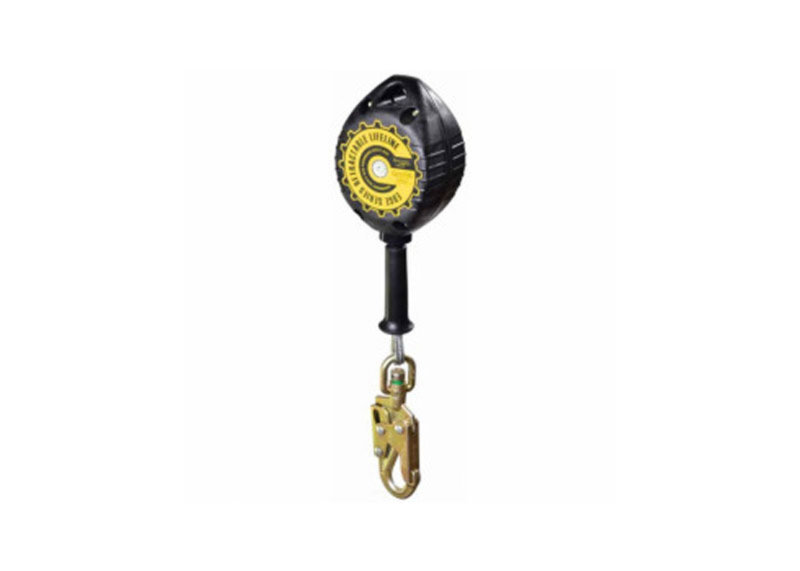
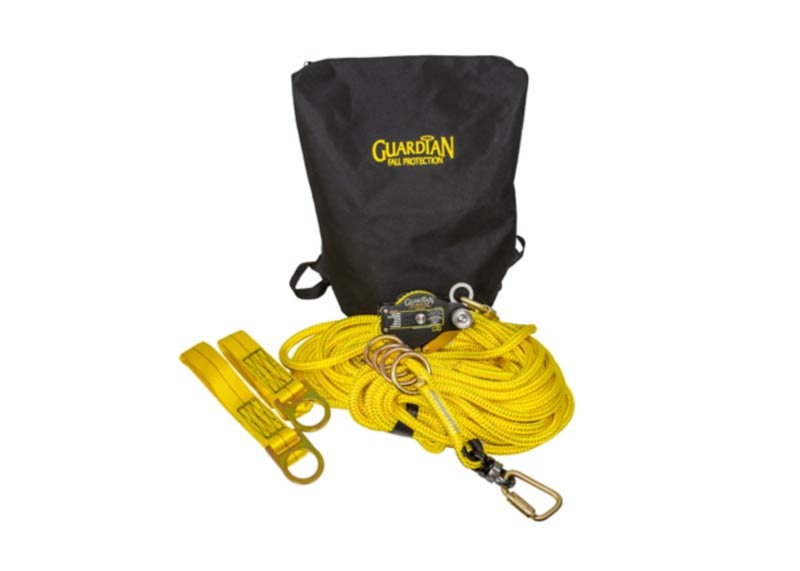
Rope and steel cable temporary horizontal lifelines that can be installed temporarily and then reused.
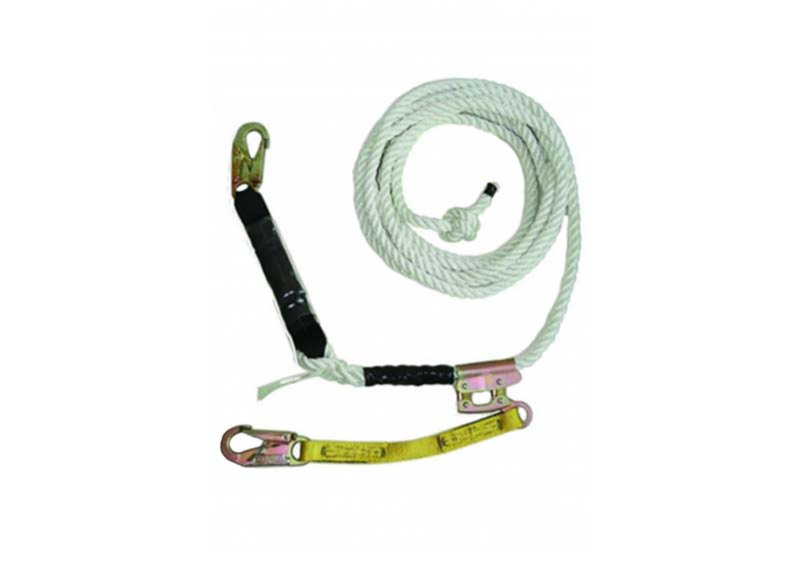
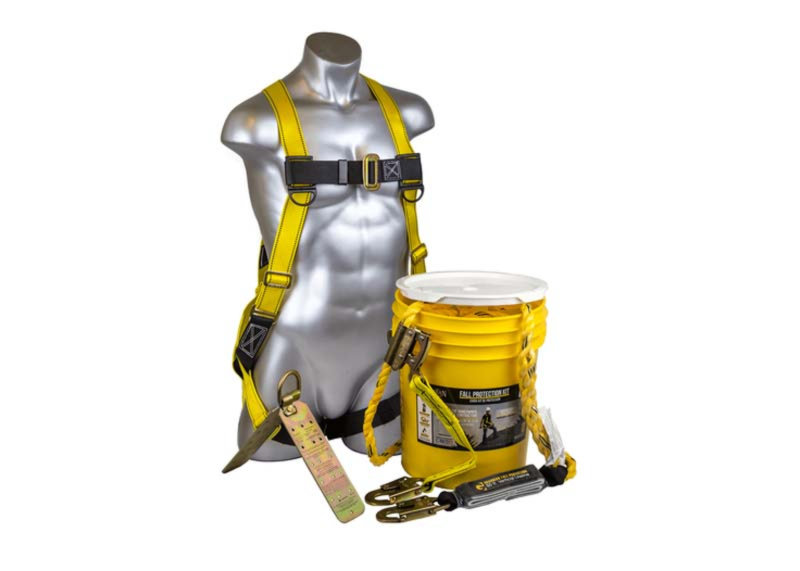
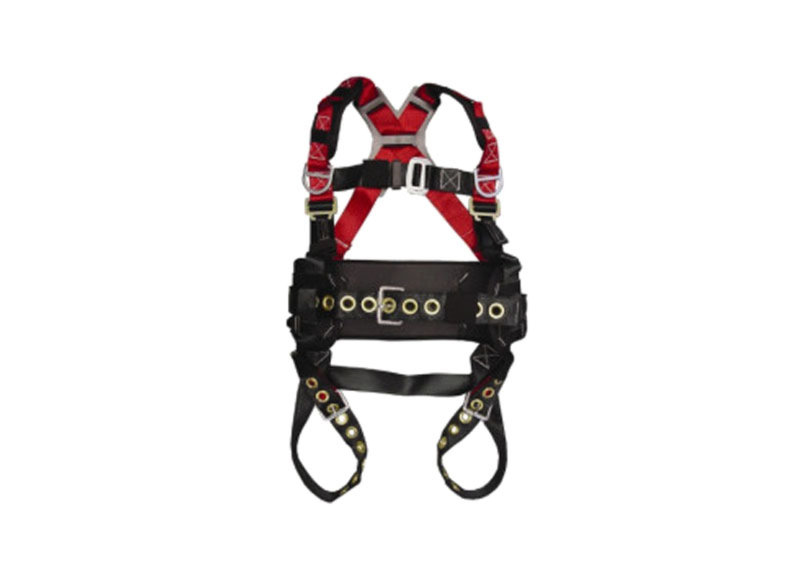
Our Fall Safety Harnesses include a variety of types like construction and welding with a variety of manufacturers such as Guardian, Miller, DBI,and FallTech. Shop today.
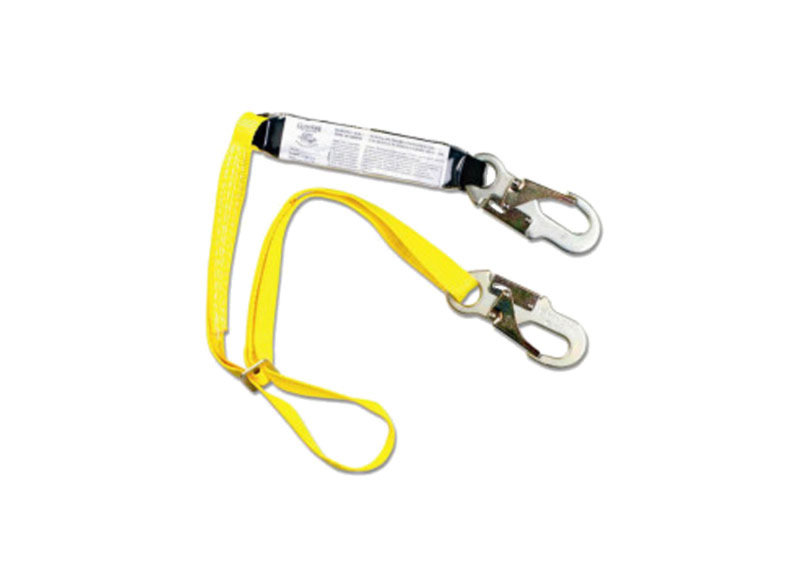
Shop our safety lanyards today. Lanyards are typically short sections of webbing or cable that are usually attached to the D-ring of a worker's safety harness. Lanyards can have a shock-absorbing feature or simply be a short connection.
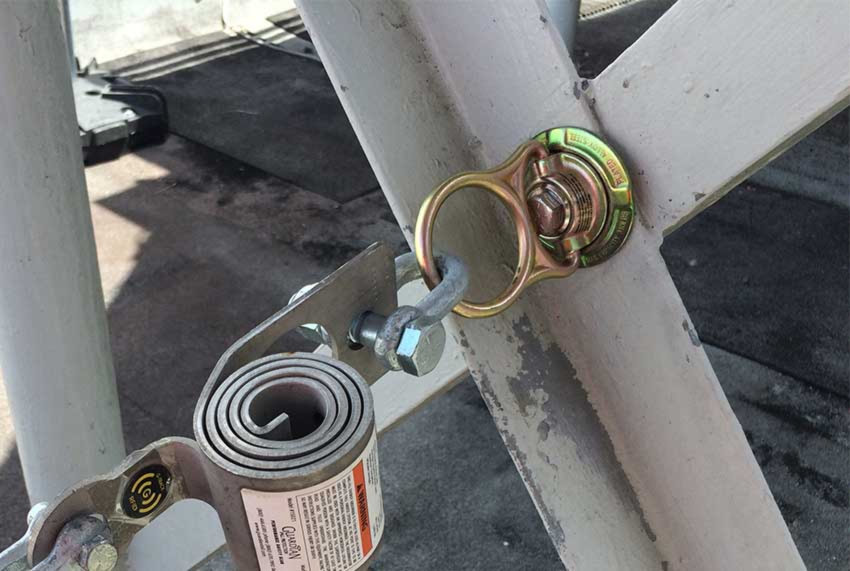
Anchor points are a vital part of a fall protection system. Anchor points are usually installed on the roof and are used to connect lanyards, lifelines, and other forms of tie-off which prevent a worker from falling. Shop our anchor points.
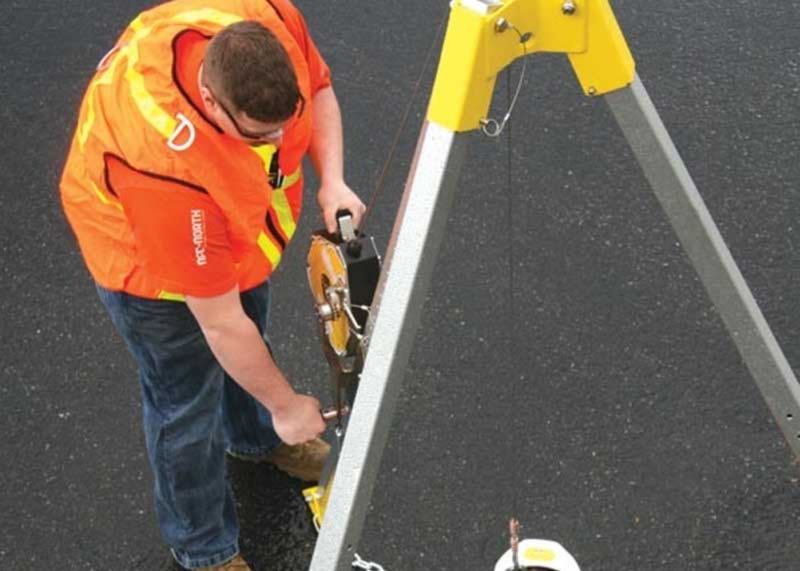
Confined space equipment allows the worker to be tied off and safety connected when working underground or in difficult to access areas.
We were looking for a fall arrest system and we needed with urgency because it was an emergency job. Your company was the one that could comply with our requirements and to service us as soon as the next day. Thanks for the excellent service.
-Wilson Gonzalez
The section of the OSHA code that specifies most to the primary requirements for lifelines as a means of personal protective equipment and fall protection systems. Specifically, the following sections are the most relevant to lifelines for personal fall protection, and personal protective and life saving equipment .
1910.29(c)(11) - The employer must ensure that each horizontal lifeline is designed, installed, and used under the supervision of a qualified person; and is part of a complete personal fall arrest system that maintains a safety factor of at least two.
1910.140(c)(15) - Lifelines must not be made of natural fiber rope. Polypropylene rope must contain an ultraviolet (UV) light inhibitor.
1910.140(c)(5) - A competent person or qualified person must inspect each knot in a lanyard or vertical lifeline to ensure that it meets the requirements of paragraphs (c)(4) and (5) of this section before any employee uses the lanyard or lifeline
1910.140(c)(4) - Lanyards and vertical lifelines must have a minimum breaking strength of 5,000 pounds (22.2 kN).
1926.104(b) - Lifelines shall be secured above the point of operation to an anchorage or structural member capable of supporting a minimum dead weight of 5,400 pounds.
1926.140(c) - Lifelines used on rock-scaling operations, or in areas where the lifeline may be subjected to cutting or abrasion, shall be a minimum of 7/8 in. wire core manila rope. For all other lifeline applications, a minimum of 3/4 in. manila or equivalent, with a minimum breaking strength of 5,000 lbs., shall be used.
A lifeline is a component of a personal fall protection system consisting of a flexible line and is used to mitigate falls while working at height. Lifelines, when properly anchored, can prevent a fall from occurring or in the event that the fall has already happened, can arrest or stop the person mid-fall, prior to them reaching the ground. When a lifeline is anchored at one end, it forms a vertical-lifeline. When anchored at both ends, it stretches horizontally, forming a horizontal lifeline. Lifelines can save lives when used properly and inspected prior to every use.
Lifelines must not be made out of natural fiber rope. Polypropylene rope must have an ultraviolet (UV) light inhibitor. When used as fall protection, all lifelines must be protected from being damaged e.g. cut, melted, abraded, etc.
A lifeline system, when used as a personal fall protection system, typically includes a flexible lifeline, an anchor point, a harness, and a lanyard. Lifeline systems are used to mitigate falls while working at height.
In a situation where a fall hazard cannot be eliminated and where passive protection, like railing, is not an option, fall protection lifeline systems can be used as fall protection. Lifeline systems can be used to arrest workers in the event of a fall or used to restrain workers from reaching the fall hazard.
A self-retracting lifeline or lanyard is a deceleration device that contains a drum-wound line that can be slowly extracted from, or retracted onto, the drum under slight tension during normal movement by the employee. When the fall happens, the device automatically locks the drum and arrests the fall. The SRL automatically limits a free fall distance to 2 ft. or less and must have the ability to sustain a minimum load of 3,000 lb applied to the device with a lifeline or lanyard fully extended.
When vertical lifelines are used, each employee must be attached to a separate lifeline. Lanyards and vertical lifelines must have a minimum breaking strength of 5,000 pounds.
A horizontal lifeline typically consists of a horizontal wire cable secured to at least two or more anchor points generally on a rooftop, outdoor construction site, or any other elevated work area where there is a risk of falling. A horizontal lifeline must be designed, installed, and used under the supervision of a qualified person. To be an effective means of fall protection, the horizontal lifeline must be part of a complete personal fall arrest system that maintains a safety factor of at least two.
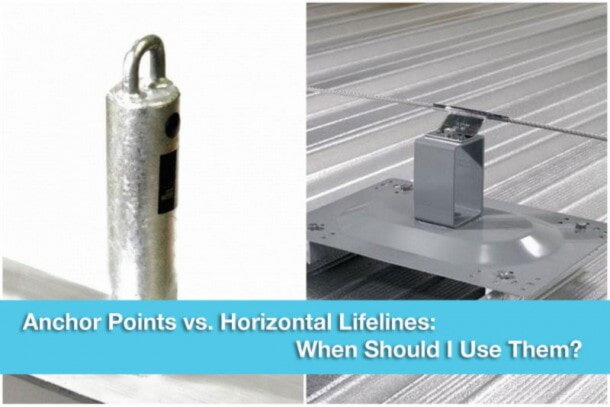
Anchor points and horizontal lifelines are both effective methods for protecting your employees from a fall. Here is a quick guide to understanding the main differences and determining the best option for your workplace.
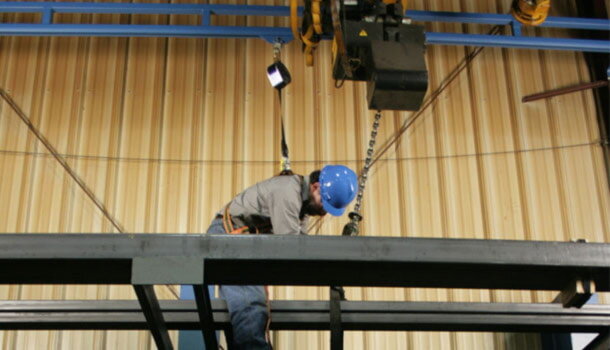
Before you ever need to do work that requires using an SRL, it is crucial that you have received training and understand how to use it safely. Here are five key points to know when using your SRL in the workplace.